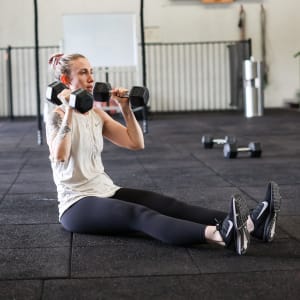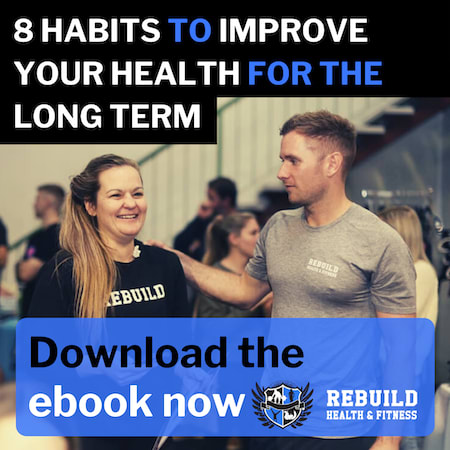
With COVID doing the rounds in the country, it’s become increasingly important to be aware of how and when to return back to the gym. After a week of isolation and downtime, you can feel eager to return to training and push yourself hard in a bid to make up for lost time, but it can be your undoing if you do too much too soon.
Before getting back into the gym or a training routine, there are a few things you need to know. We spoke to physiotherapist Louis Savill about safely returning to training after having COVID-19.
Return only once you’ve recovered completely
The coronavirus attacks your lungs and can affect your heart and breathing.
Dr. Izzy Smith is an endocrinologist and discusses a return to trianing. She recommends:
- You should realistically rest for ten days post-symptoms before you really go back to training. With mild respiratory infection, some light exercise is usually fine but with COVID it’s a different kettle of fish and people should not exercise until they’ve been symptom-free for at least a week.
- Apart from potentially prolonging the illness, the main concern is due to the risk of exacerbated covid-associated myocarditis. Myocarditis is an inflammation of the heart muscle and can be associated with even asymptomatic covid-19 infection but more likely with severe disease. Returning to exercise too early with underlying myocarditis could exacerbate the inflammation and increase the risk of permanent heart damage.
- Increasing cardiac output could also increase the viral load transferred to other parts of the body, so your lungs and other normal inflammation associated with high-intensity exercise could further increase the risk of significant symptoms.
- It’s critical that returning to physical activities is done slowly with rest days between activities. If you required hospitalisation from COVID or have symptoms of chest pain, or a significant increase in RPE, like a rarely perceived exertion compared to normal, you should have medical clearance before resuming exercise.
These reports mixed with the guidelines created by our in-house physio helps with recovery as it provides a framework making the entire process much easier to understand and deal with.
Our coaches recommend taking it very very easy in the first few weeks back.
Coach Sean says: “You know, if I had to spend a week at home, not training, not exercising, and I do something active every day, it would be very difficult for me. This is why I think having some kind of guidelines that are carefully created and adapted for the members of the gym is a great idea. You got a little bit of a plan then because otherwise you’re going in not knowing, you’re guessing and that’s where I guess a few people run into trouble."
“I think you do have to just speak to people to not think so short term," says James. "An extra two or three weeks of just gradually building into activity could then set you up for the rest of the year but, we could cause more damage to ourselves if we go too hard too fast."
Five stages of the ‘Return Handbook’
A handbook curated by our in-house physiotherapist, Louis Savill – the five stages have been explained for the ease of all Rebuild clients who’ve tested positive and need to know when to return. The basic criteria to return is to come in ten days from onset of symptoms, a negative RAT or PCR-test, be symptom-free for seven days, exceptions are for things like mild cough or dry cough or the usual cold stuff, and then be off all treatment, i.e., paracetamol.
- Stage 1
Stage 1 lasts for a minimum of ten days, where the idea is to make sure you’re doing alright, are well-rested, and are able to carry out basic daily activities like walking easily. During this period, you should be monitoring your heart rate to ensure it’s at a healthy level, again for about ten days and the objective is to allow for ample recovery.
- Stage 2
This is when you’re going to want to get back into the swing of things a little bit, so a minimum of two days is what you want to be aiming for. Aim for light activity, walking or jogging, something that will keep your heart rate 70% or lower. Limit your cardio to about 15 minutes maximum and the objective is to increase heart rate and assess response. This stage is where you’re testing waters to see how your body responds to changes inactivity.
- Stage 3
Again, two days minimum here too. You would start by increasing the load of the activity so a low RPE which is a rate of perceived exertion which can be described as a subjective feeling of intensity when you’re doing anything. Controlled intensity metcons like EMOMs, so you have some forced rest. 80% max or less heart rate. EMOMs for 12-minute max and add load and monitor for post-viral fatigue symptoms.
- Stage 4
This stage lasts for another two days, and what you’re looking for here is an increase in intensity – so a moderate RPE. You should still be looking to keep that heart rate around 80%, which again if you’re doing something for a long period of time you don’t find it over that too much anyway. Limit metcons to around 20 minutes and then graded reintroduction of higher intensity training.
- Stage 5
Finally, this comes up a minimum of 17 days from the onset, and realistically, it might feel like a long time but this is less than three weeks. Take a step back and look at it from the point of view of where it’ll take your overall health in the future, it’s not too bad to just hold on and take things slow. After that, you return to your normal training. For the first few days of normalcy, it would be advised to just monitor each stage, monitor subjective symptoms; shortness of breath, fatigue, and cough, resting heart rate (if available), and RPE.
Take it easy
During a time of this sort where you’ve tested positive, aren’t feeling all that well, and have had to skip training, not being too hard on yourself is key. Life happens sometimes and you can’t always control how things unfold.
James believes you need to consider all factors before you start feeling bad for the situation you’re in. He says, “Listen, you’re in the worst pandemic in over 100 years, you then have to enter isolation which is the worst thing that you can ever do to a human being, right? You can’t move, you now have to work out of your house, and yet you still feel bad for not sticking to the plan that you originally had previously. Does that not sound a bit ludicrous?”
Of course, it goes without saying that you’re allowed to feel bad but it’s important to understand that this is not forever, nor is there anything you can do about it.

